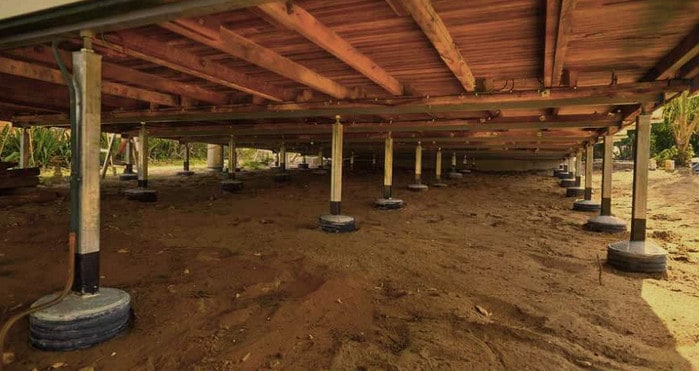Techniques for House Restumping and Reblocking
There exist two basic techniques used today for restumping and reblocking Melbourne houses. Also, there are three types of restumping materials you can find today.
Although it’s not obvious to tell whether the existing stumps require replacement, there are certain signs that tell it’s time to replace the existing stumps. These signs include:
- The floors are no longer level or they’re uneven
- There are cracks on the wall plastering or in the bricks
- The doors and/or windows are jamming and are not opening and closing smoothly

Partial Restumping
Upon having the stumps checked by a professional restumping contractor and they report that some stumps require replacement, then you can go for partial restumping.
Partial restumping is recommended when most stumps are in good condition and only some are damaged.
However, the look on some stumps can be quite deceiving, especially when dealing with wooden stumps. Wooden stumps may look just okay above the ground but are deteriorating beneath the ground.
In such a situation, simply replacing some of the stumps and leaving out others may lead to a costlier replacement exercise later on.
Partial restumping entails lifting part of a house where the damaged stumps are and replacing them with new stumps. Once done, the house will be allowed to settle back onto the stumps.
Full Reblocking / Restumping
If your house is quite old and comprises of wooden stumps, it’s advisable to do full restumping. In this case, you should replace the old wooden stumps with steel or concrete stumps.
In this case, the entire house will be jacked up and all the old stumps will be replaced before settling back the house onto the new stumps.
.
Steel, Concrete, or Wood
The main types of stumping materials used today are steel, concrete, and wood. Typically, concrete and steel stumps last longer than stumps made of wood.
This is because borers prefer eating wood rather than tough materials such as concrete and steel. Nevertheless, each of these materials has its unique advantages that make them suitable for certain situations and specifications.
Wooden stumps, especially premium quality options, are made of treated hardwood. The hardwood is treated with chromated copper arsenate (CCA) to protect it from borers for enhanced longevity.
On the other hand, concrete stumps are reinforced with steel to make them more solid. Steel stumps boast of being the most durable option due to their hard-wearing nature and are not prone to attack by borers.


